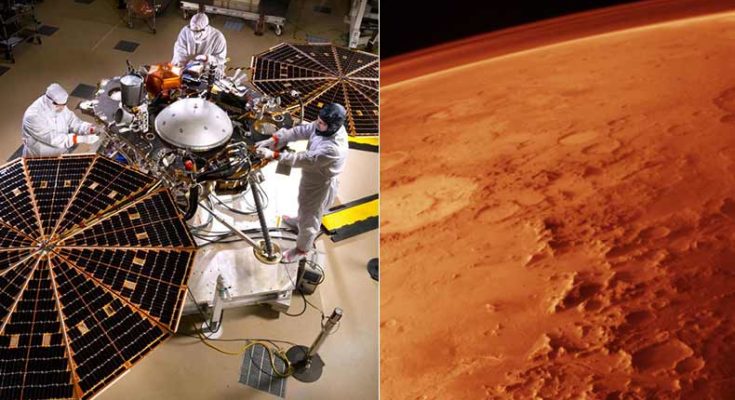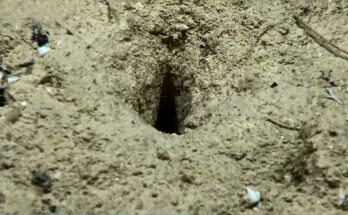The next Mars mission of NASA to carry rocket will launch also two possible ‘tagalong’ devices to the red planet. Image Courtesy – NASA
The space agency stated that the next Mars mission of NASA to carry rocket will launch also two possible ‘tagalong’ devices to the red planet.
The ‘Insight Lander’ is going to launch on travel to Mars in the month of March 2016. It will be associated with 2 small satellites which are called ‘Cubesats’. This launch of 2 spacecraft will be a demonstration of technology planned to help with communications at the indispensable moments while the ‘Insight Lander’ touches down the soil of Mars.
Many CubeSats in different times have completed their missions above Earth. It will probably be the first time this kind of spacecraft is being prepared to launch to any other planet. NASA made a statement that these CubeSats came with a structure of having 2 sunlight panels and a pair of radio antennas. The radio antennas would be utilized to redirect information about Insight’s landing on Mars to the earth even in a much shorter time than the traditional methods.
Read: Space explorer of Japan is ready to blow crater in asteroid
This ‘MarCO Mission’ may solve the major communications problem for NASA. The ‘InSight’ will make communication with the ‘Mars Reconnaissance Orbiter’ of NASA after landing on Mars. On the other hand, the ‘Mars Reconnaissance Orbiter’ will send a confirmation report of landing to the ‘mission controllers’ on the Earth. However, it may take more than 1 hour for the ‘Mars Reconnaissance Orbiter’ to relay information of the ‘InSight’ back to the Earth.
This project, if gets succeeded, will surely beat the ‘Orbiter’ performance by redirecting confirmation of the landing earlier. At the same time, the ‘cubesats’ will travel around Mars.
Finally, it could permit a ‘bring-your-own’ communications relay option for future Mars missions, if the MarCO demonstration project succeeds. NASA told in a statement that it will definitely help to collect information about the Martian atmosphere in those critical minutes as ‘Insight Lander’ enters the atmosphere.
Read: Level of Carbon Dioxide in 2013 has overflowed than previous 30 years
As the giant Atlas V rocket carrying the ‘InSight’, MarCO will be a pulling ride and the CubeSats will not travel to Mars with the Lander. The tiny crafts travel in their own orbit to Mars. The CubeSats will flyby Mars in September 2016, probably be the time when ‘InSight’ will be landing on the red planet.
‘InSight’ is developed to examine the interior of Mars to gather more information on how the planets of this solar system created billions of years ago. Scientists are expecting to reveal information about the Earth’s formation by revealing the mystery of the formation of Mars.
NASA’s spacecraft travellers are examining several areas of the red planet. Moreover, NASA is preparing to launch another traveller to Mars in the year 2020 for further scientific exploration. The 2020 wanderer will keep investigating Mars and possibly store fascinating rock tests that could be taken back to Earth for examination at some point later on.





